Pros and Cons
You need to decide whether you need a balcony in a private house and weigh the pros and cons before you start developing a design project for your future cottage.
Due to its attractive appearance, the loggia becomes a beautiful decoration of the facade.
Adding a loggia to a house requires large financial outlays.
A glazed internal balcony is used as additional living space.
Due to an installation error, the structure may collapse.
It provides free access to fresh air.
A balcony can be part of a veranda or porch structure and protect the extension from precipitation and other factors.
In the event of a critical situation, the loggia can serve as a spare emergency exit.
What types of balconies are there?
There are two types structures.
Open balcony in a private house
Such a loggia is a decorative element of the facade. Therefore, its finishing, decoration and choice of materials deserve special attention. For open balconies, metal fencing is often used. The width between the bars of the lattice should be no more than 10 centimeters.


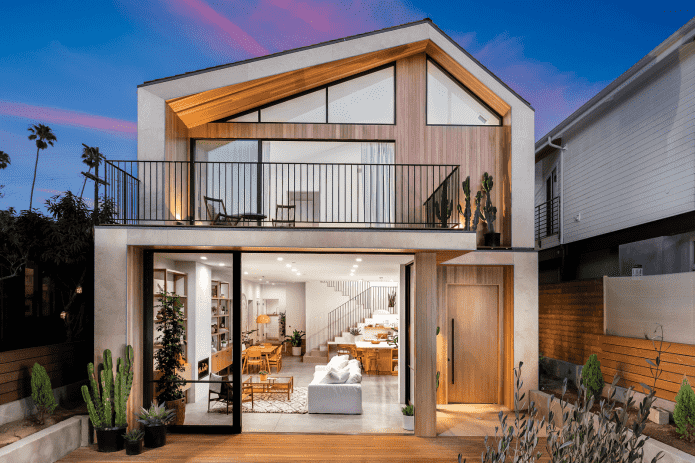
On photo project of a modern private house with an open balcony.
Closed balcony
Due to glazing, the closed loggia is protected from wind, rain and other precipitation, and also has good sound insulation. Such a balcony will be a great place for growing plants that need plenty of sunlight. Thanks to partial, panoramic or stained glass glazing, it is possible to turn the extension into an original and aesthetically attractive element of the house facade.
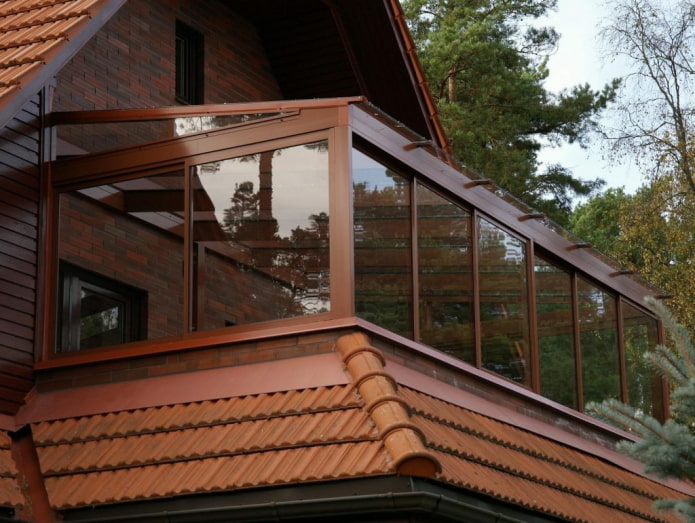
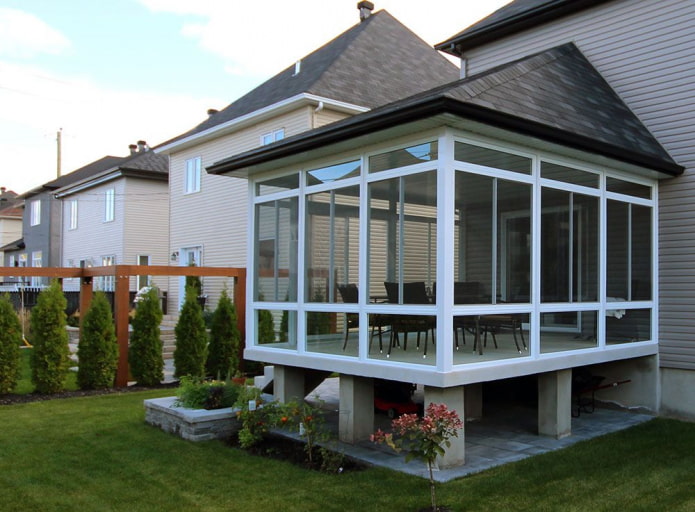
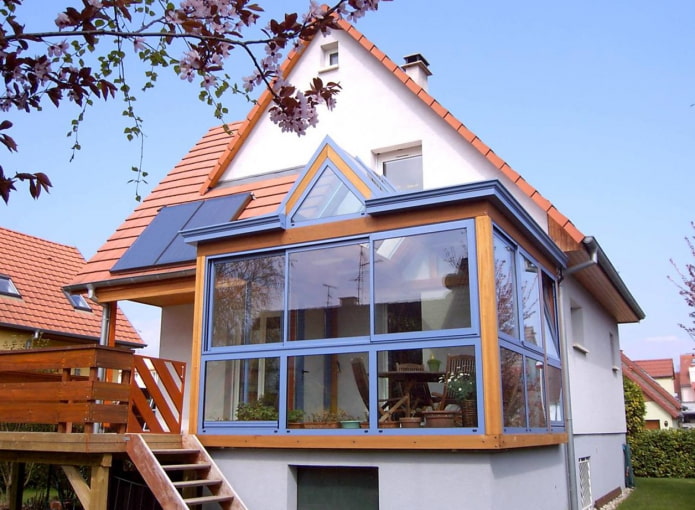
The photo shows a panoramic glass loggia in a country house.
Material
Highly durable materials are used to construct balcony structures.
Wooden balcony
In decorative terms, a wooden balcony is significantly superior to structures made of other materials. Thanks to natural wood, a cozy and warm atmosphere is created on the loggia. In addition, wood combines well with various finishes.
To ensure the strength and durability of a wooden balcony extension, the surface of the handrails and all elements is carefully sanded, oiled and covered with water-repellent, frost-resistant varnish and hydrophobic paint. For flooring, it is better to use boards at least 4 centimeters thick.
To make the structure more durable, the beams are attached to the walls with metal bolts or corners. A cantilever balcony is equipped with vertical column supports.
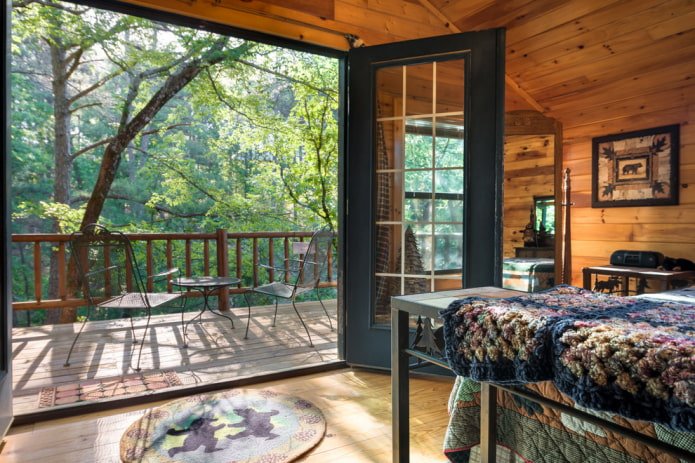
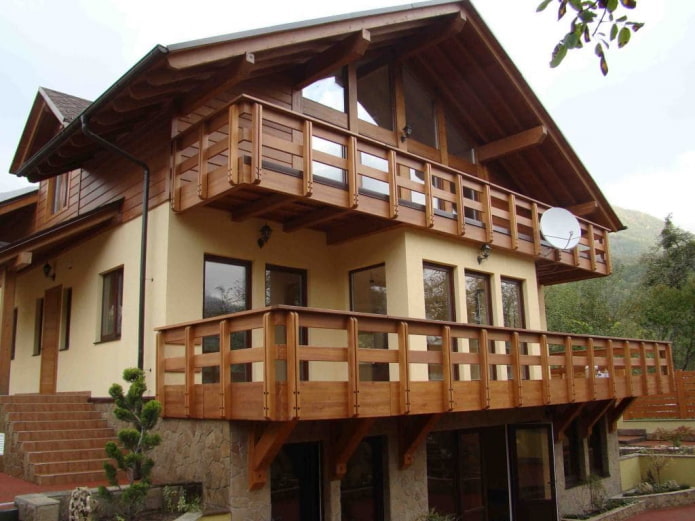
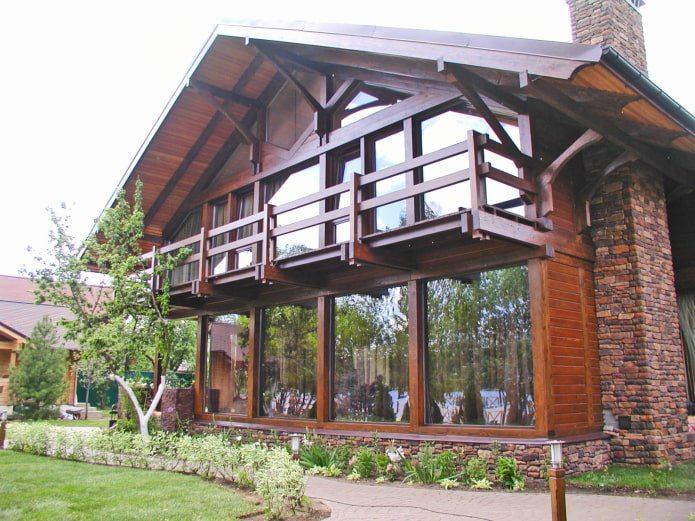
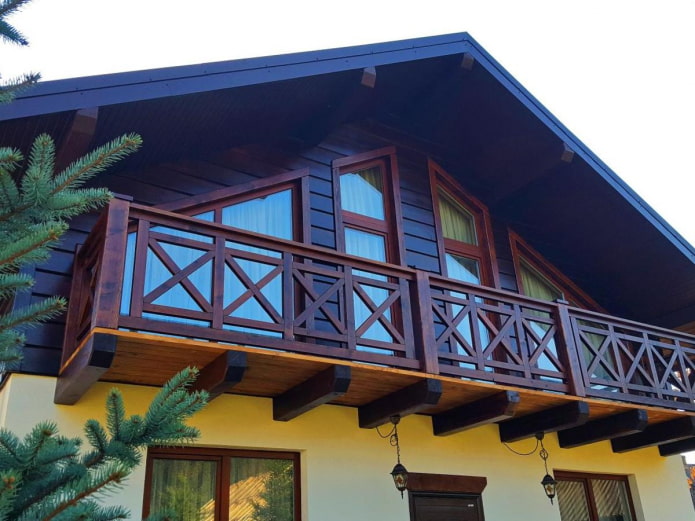
The photo shows a private house with a long loggia made of wood.
Brick balcony
When creating a brick loggia project, you need to calculate the load on the slab, and, if necessary, strengthen the concrete base with brackets.
Even without additional cladding, brickwork has a beautiful appearance and is an excellent base for creating any interior.
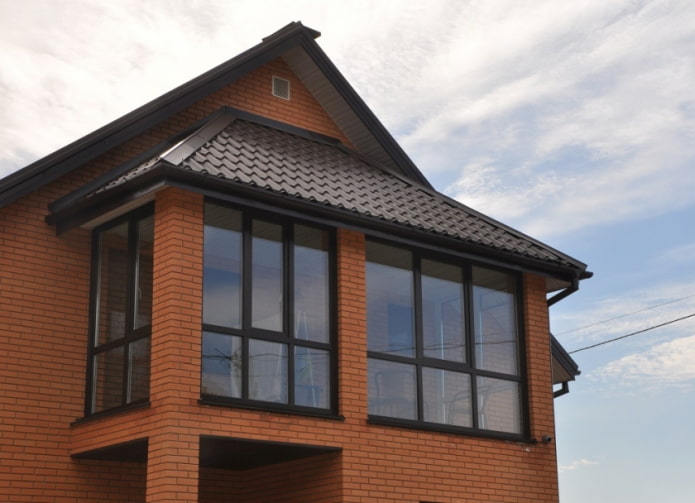
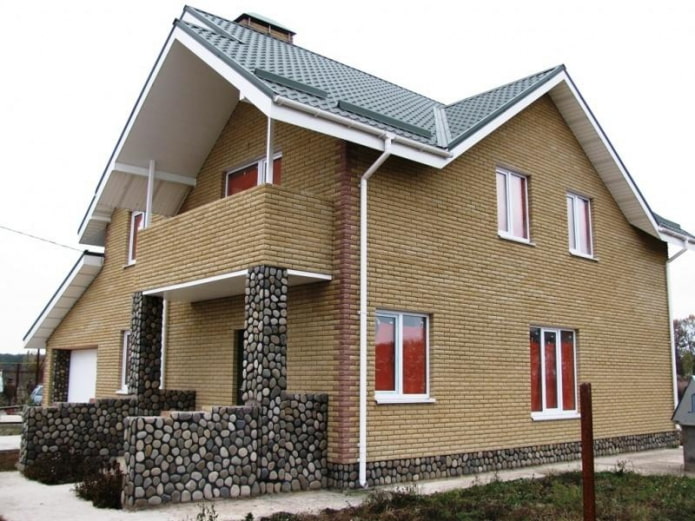
Concrete balcony
Such a loggia requires a special approach. Since the concrete base is heavy and puts a lot of stress on the walls of the cottage, the balcony is equipped with additional supports.
The structure on a concrete base should have a depth and projection of no more than one meter and have a slope angle of about 2%. The upper level of the slab is installed five or eight centimeters below the floor level. The concrete base is equipped with a water-repellent coating and covered with a cement screed. The fence is securely attached to the floor and the load-bearing wall of the house. The parapet height should be at least 1 m.

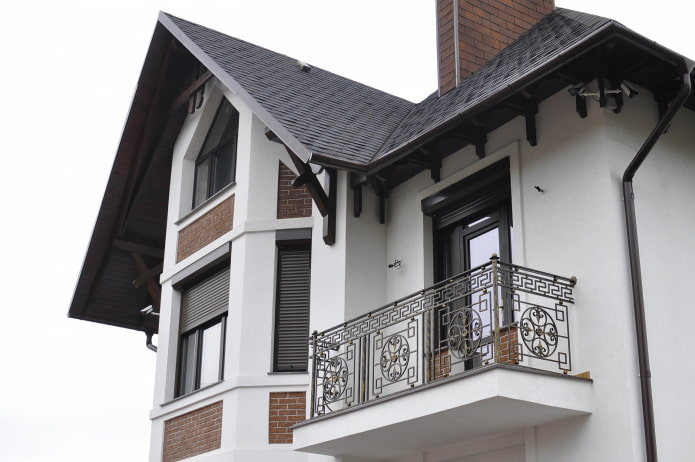
Metal balcony in a private house
Due to its originality, it turns into a real decoration of the facade. A forged balcony can have a straight, radius, blown, arched or mixed configuration. Metal fencing is mainly made using natural, geometric shapes or openwork weaves that look exclusive, stylish and respectable.
Special anti-corrosion agents will help make the structure resistant to precipitation and high humidity.
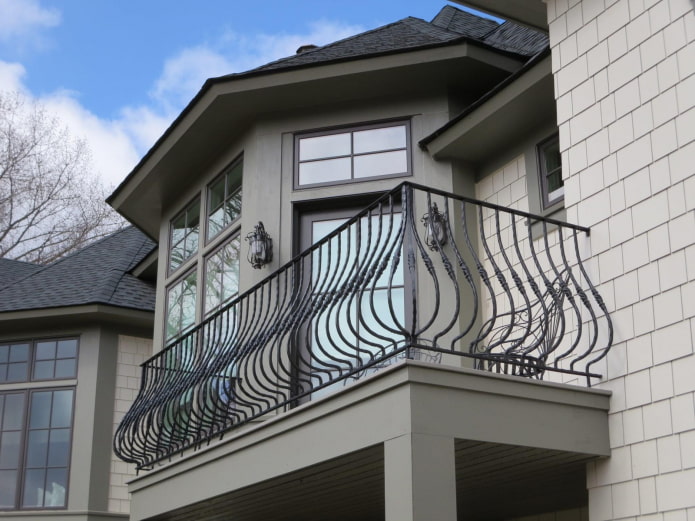
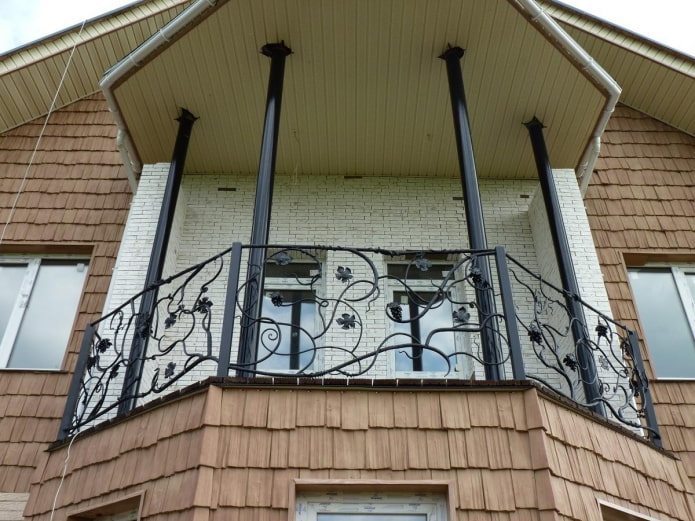
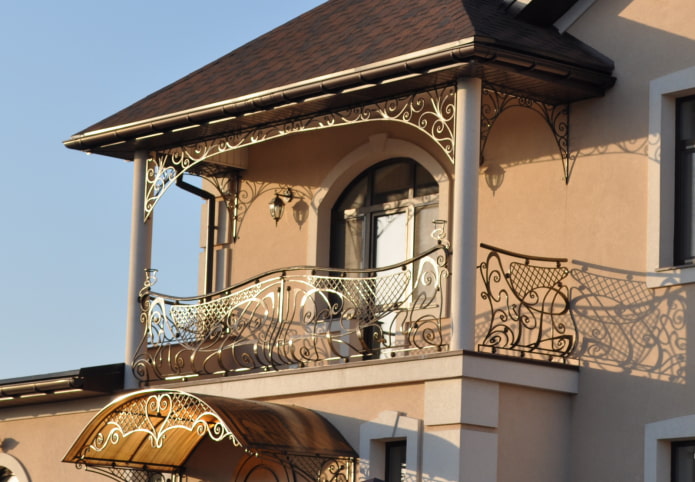
The photo shows a balcony structure with a forged metal railing in exterior of the house.
Location of the balcony
The cottage project provides for different locations of the balcony. For example, the structure can be installed above a terrace or veranda, above a porch, on the second floor under the roof or at the end of the building.
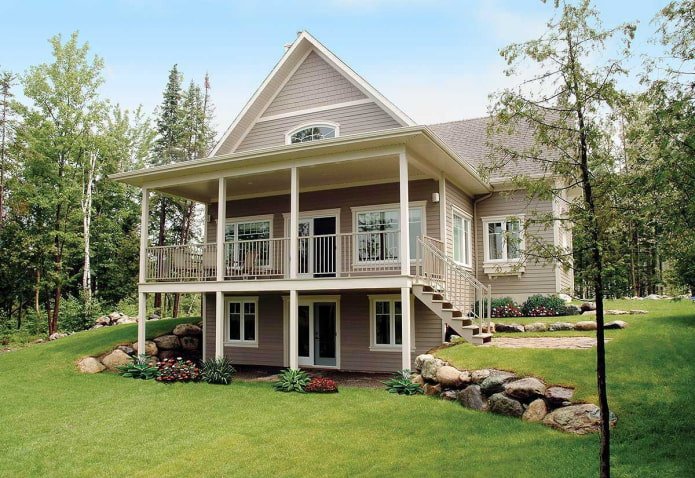
The photo shows a project of a country house with a loggia located in the central part of the facade.
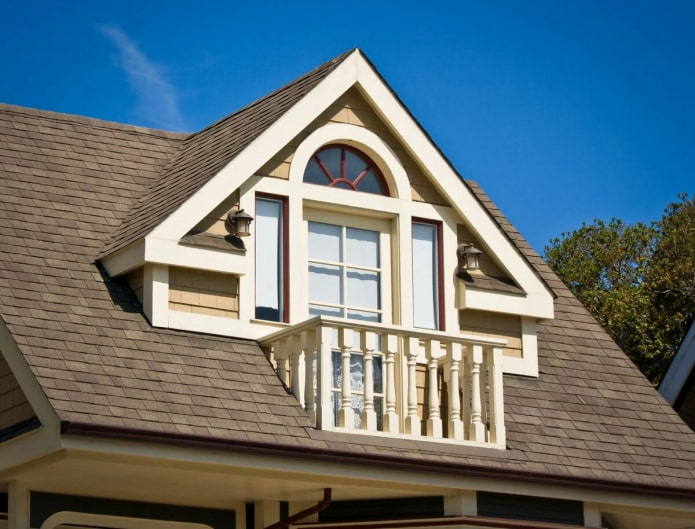
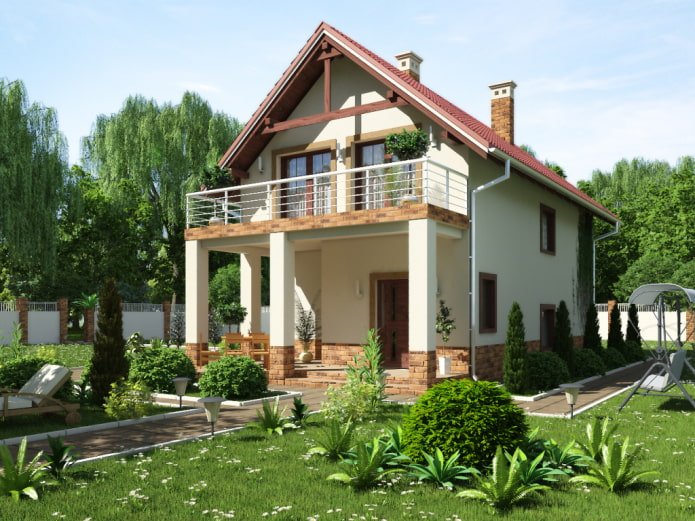
A common placement of the balcony is above the entrance to the house in the central part of the facade. This solution is perfect for a small cottage. The loggia, sheltered under the frontal canopy, will be a great place to relax, which can be furnished with a small table, chairs or a sofa.
The corner loggia rests on two walls of the house and on an additional column. Cottage facades are often complemented with the help of cantilevered platforms of unusual shape, which are based on the projections of the first floor or on the internal corners of the building.
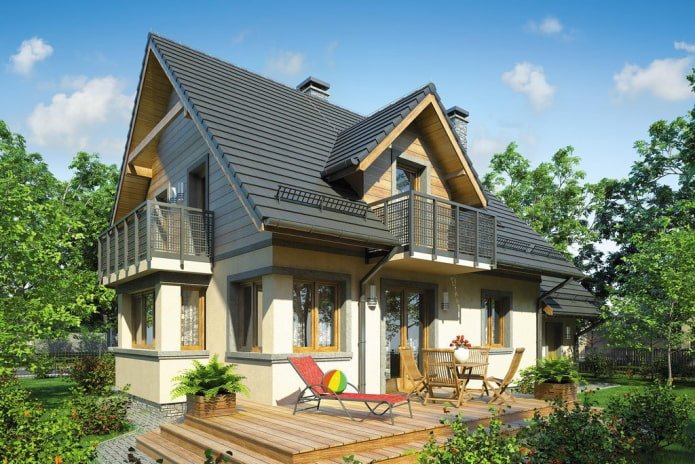
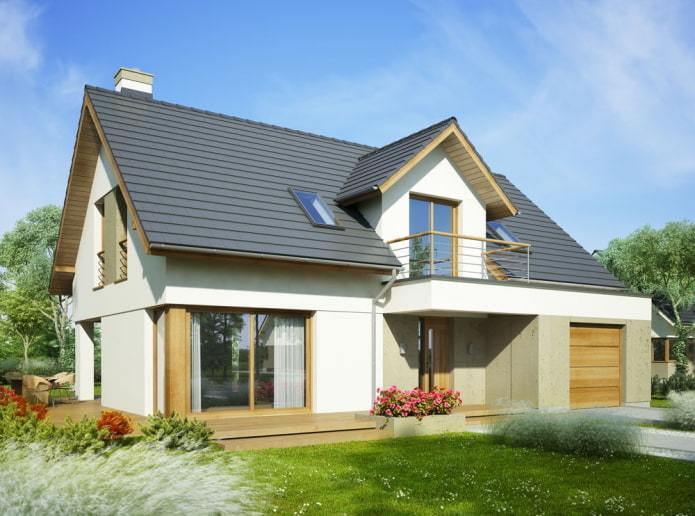
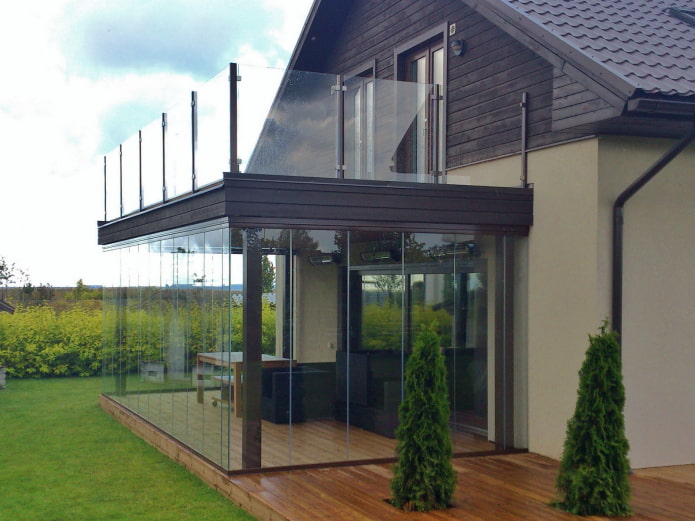
An opening in the form of a balcony-window is arranged in the roof of the house, as well as a pediment or roof structure, which can protrude beyond the facade of the building or be recessed.
The structure above the veranda visually divides the house into two parts, helps to increase the volume of the building and gives it a more airy look.
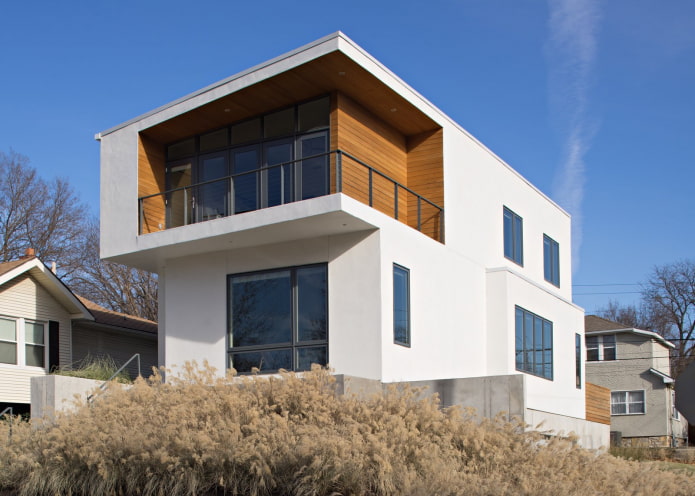
The photo shows a balcony on the corner in the project of a modern country cottage.
Photo of a balcony in a wooden house
A private house with a balcony made of logs, designed in the style of a Russian tower, has an interesting appearance. Thanks to this material, the structure can be supplemented with balusters, handrails, carved railings or decorative posts.
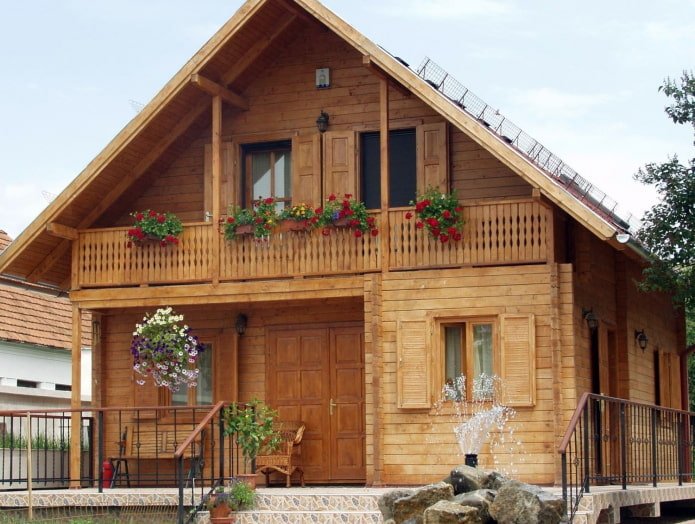
The photo shows the exterior of a wooden house made of timber with an open balcony.
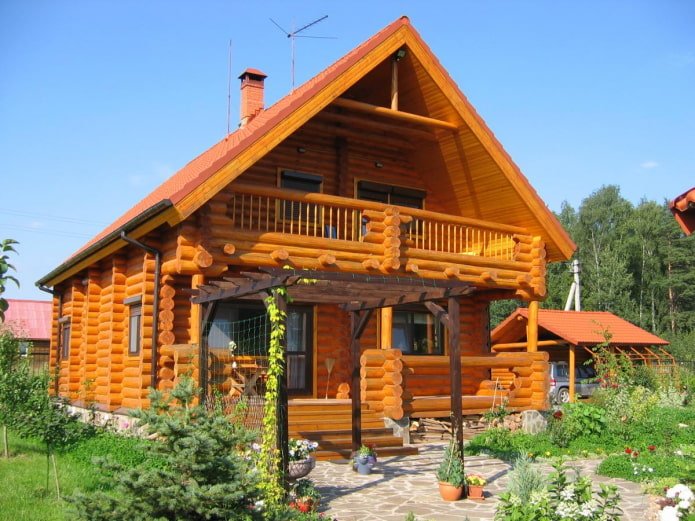
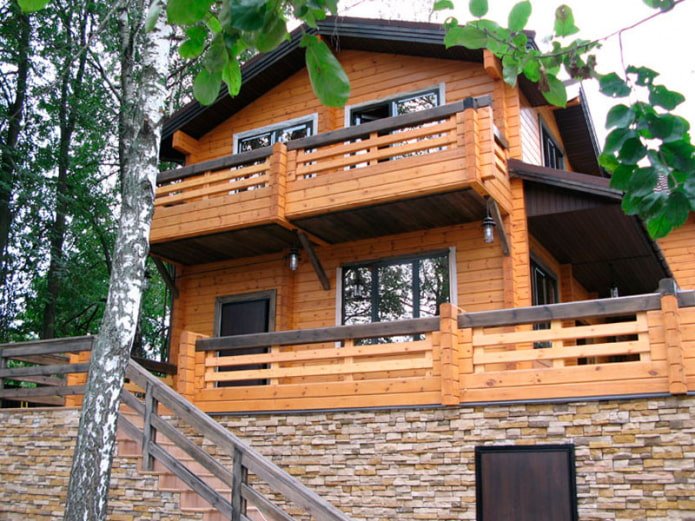
In a wooden house made of logs, the balcony is most often equipped in the attic. The recessed type of the structure is reliable and safe.
A triangular balcony located under the same roof as a wooden structure will add integrity to the cottage.
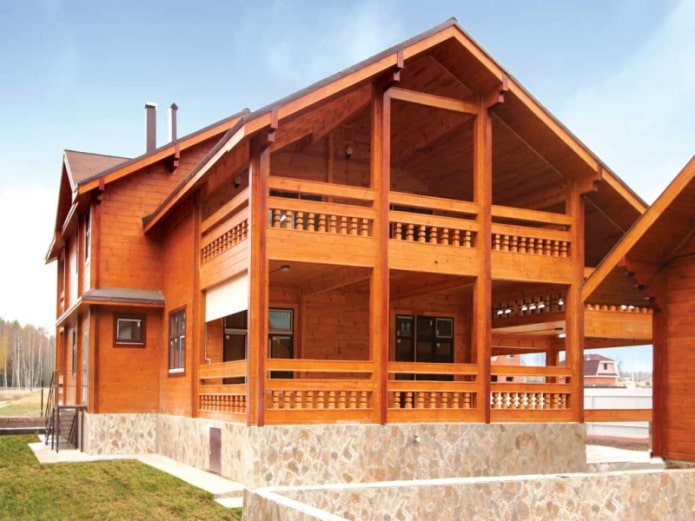
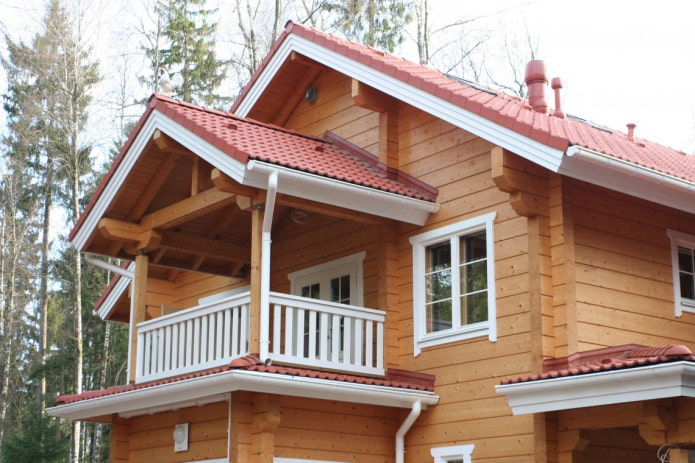
Which canopy is better to choose?
There are single-pitched structures that have a sufficient slope for water drainage and more stable gable-type canopies, which are suitable for corner loggias.
Slate, ondulin, metal tiles or polycarbonate are used for the construction of canopies. Polycarbonate products are considered the best option. The structures are easy to install, have a high level of noise absorption and a long service life. Wide canopies are complemented by special racks.
An arch-shaped canopy has an elegant appearance, which is also quite functional and practical in operation.
A solid and expensive dome canopy is a less popular solution, as it has certain technical difficulties. But despite this, cottage owners prefer to decorate the loggia using this method, which gives the building a presentable appearance.
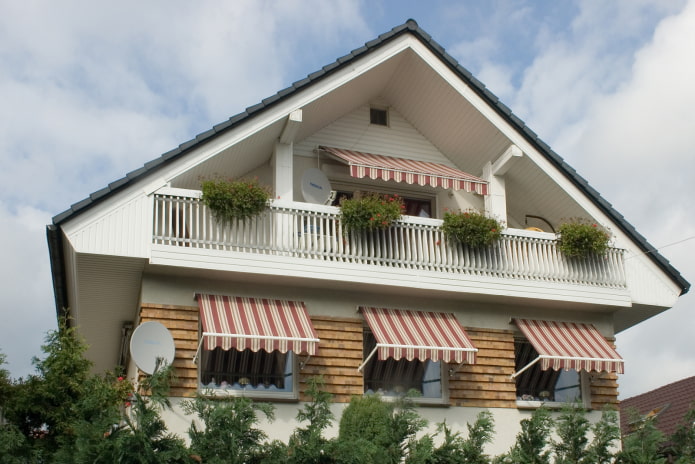
The photo shows a loggia in a private house, decorated with a fabric awning.
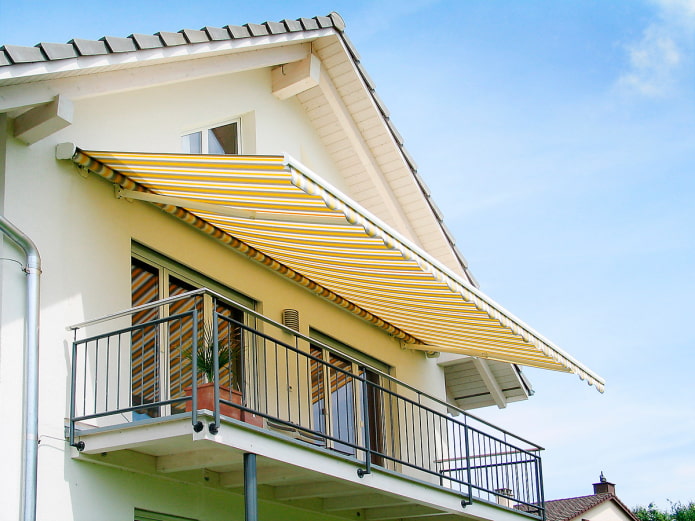
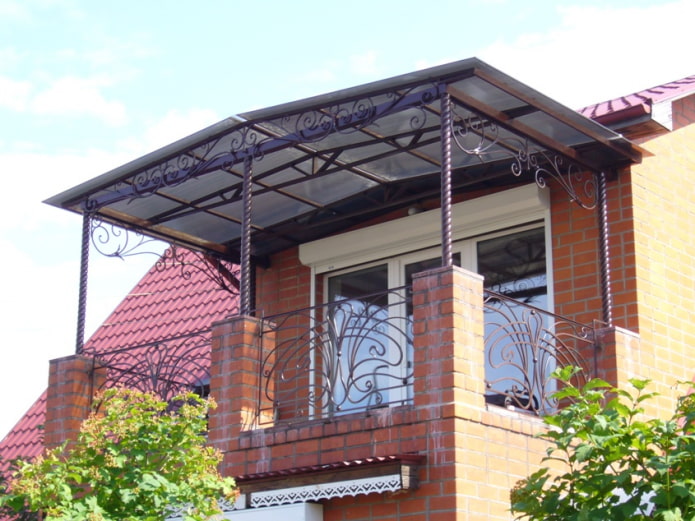
You can protect an open loggia from the sun with an original awning canopy. Such a product will advantageously decorate the facade of the house, and also prevent the accumulation of snow and the formation of icicles.
Placing a balcony under a roof helps to expand the functionality of the loggia. The roof should have a slight slope and be slightly larger than the balcony slab.
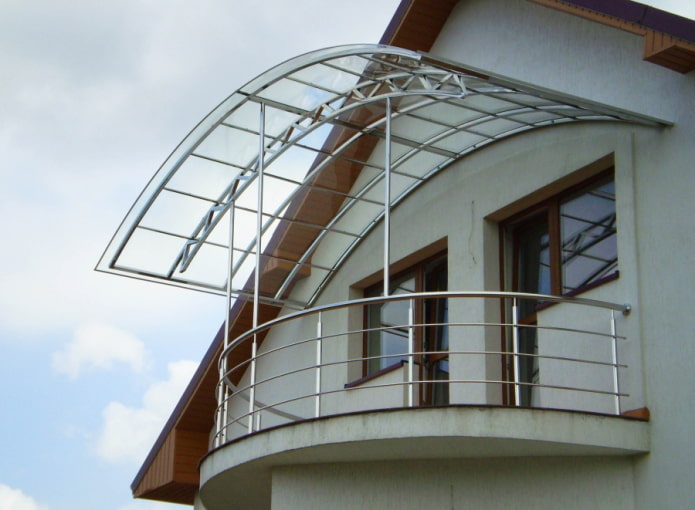
The photo shows an arched transparent canopy over an open balcony structure in a private house.
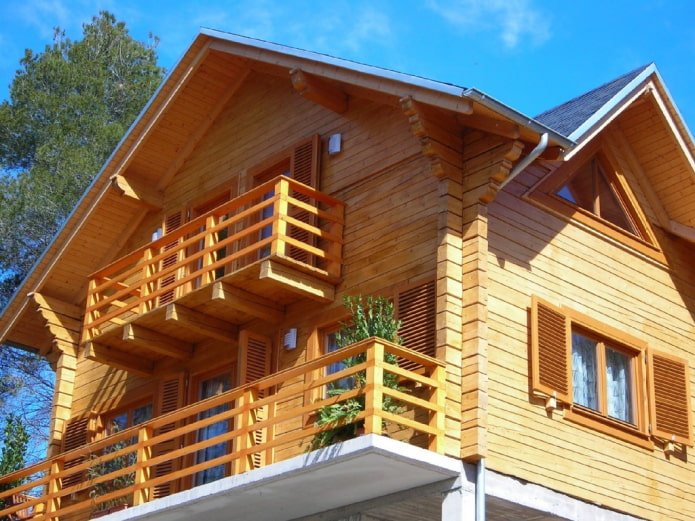
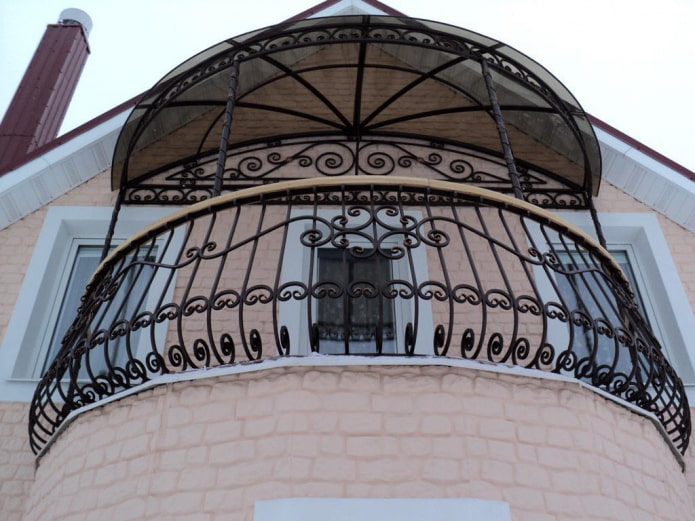
Design and shapes
An open balcony structure of a semicircular shape will attract attention with its magnificent design. A fence and a canopy with artistic forging will add even more elegance to the structure and turn the balcony into a bright relaxation area.
A bay window is practically no different from a glazed loggia, but inside it represents a continuation of the interior of the room. The bay window ledge can have many faces separated by windows.
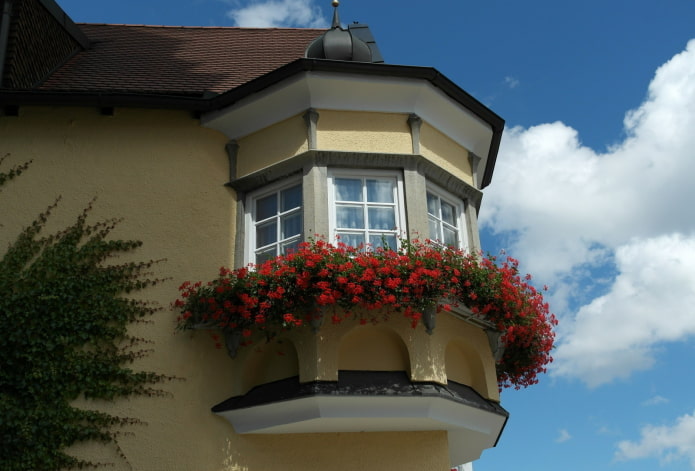
The photo shows the design of a bay window balcony decorated with flowers.
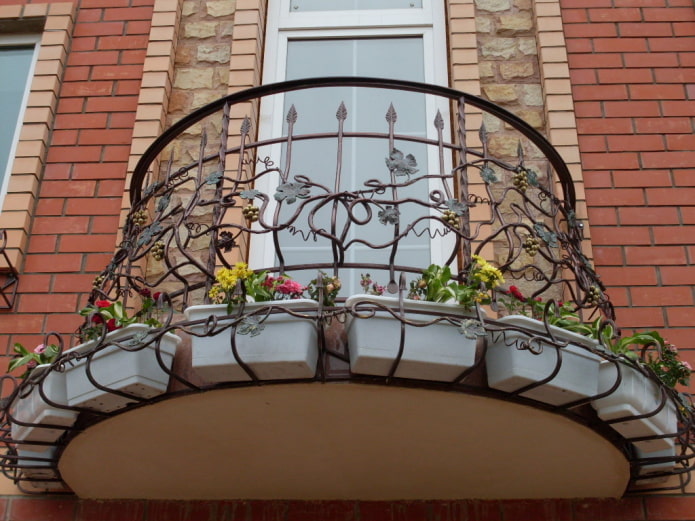
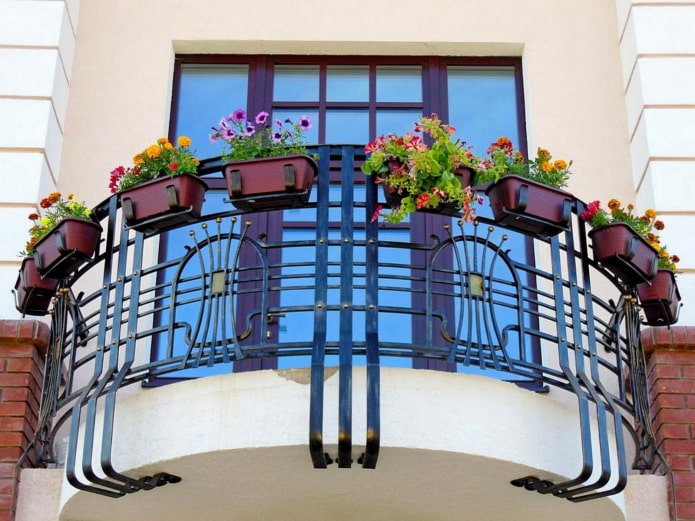
As a decor, it is appropriate to put boxes with large plants on the balcony, hang flowerpots, and decorate the outside of the fence with hanging or climbing greenery.
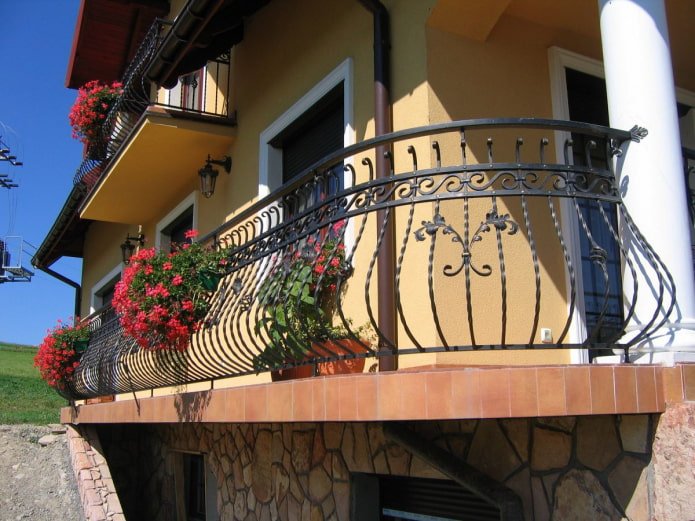
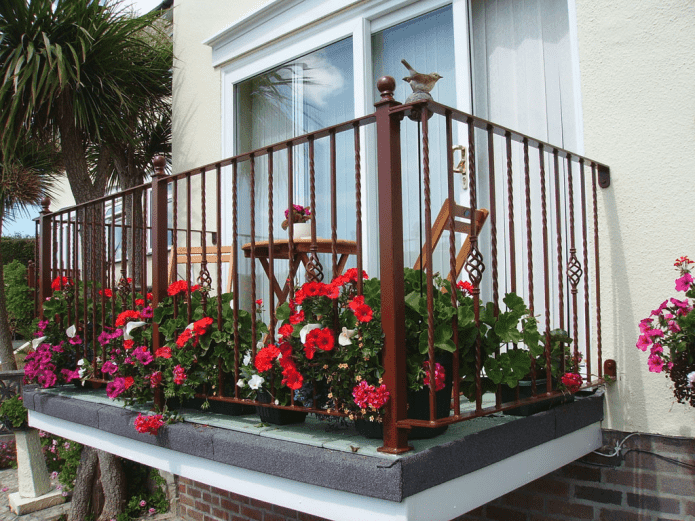
Now reading:
- Your Comprehensive Guide to Buying a Used Opel Corsa
- Comprehensive Guide to Buying a Used Nissan Qashqai
- Designer photo wallpaper for the hall: 82 images of living room interiors.
- 10 best transformable furniture for small apartments.
- Modern interior in contemporary style: 55 photos and design solutions.